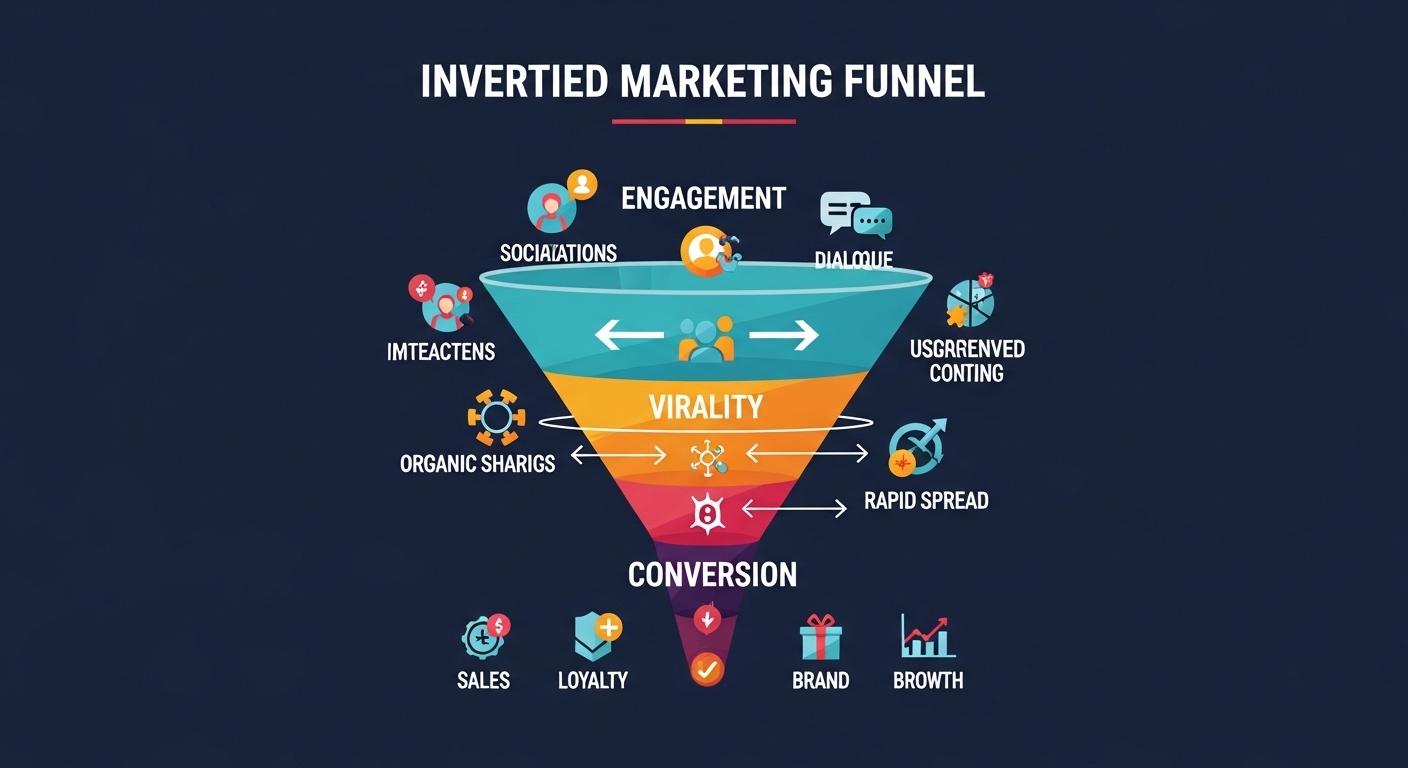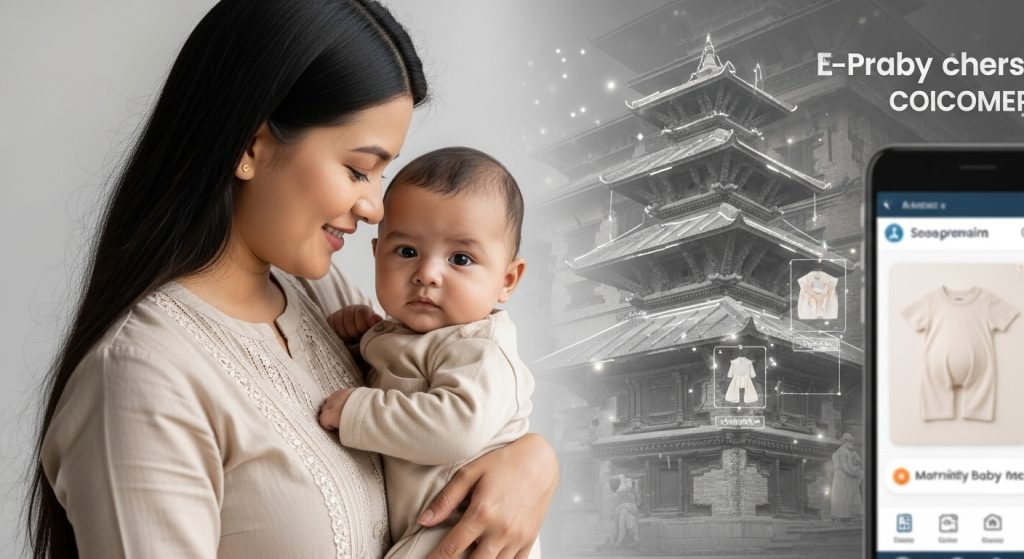Digital Marketing Campaign Analysis: Blueprint for Success
I. Executive Summary: The New Imperatives of Modern Digital Marketing
This report provides a comprehensive analysis of the most influential and successful digital marketing campaigns in recent history, deconstructing their strategies to reveal the core principles that drive transformative results. The analysis demonstrates a profound shift in the marketing landscape: the most effective campaigns are not singular advertisements but dynamic, participatory narratives that transform a passive audience into active brand advocates and co-creators. This new paradigm moves away from a traditional broadcast model toward a dialogue-driven approach, where the brand’s role is to initiate a conversation that the audience will sustain and amplify.
The success of these campaigns is built upon four fundamental strategic pillars: first, the cultivation of emotional resonance through purpose-driven storytelling; second, the sophisticated use of data to craft deeply personalized experiences; third, the deliberate embrace of creative audacity, humor, and a willingness to invert conventional playbooks; and fourth, the mastery of real-time engagement to build and nurture a thriving brand community. The report synthesizes these findings into a series of actionable recommendations, proving that these principles are not exclusive to global corporations but are scalable and applicable to any organization seeking to forge a deeper, more authentic connection with its target audience. By examining the tangible business outcomes—including significant sales increases, market share growth, and billions of earned media impressions—this report establishes a definitive blueprint for developing impactful digital marketing strategies in the modern era.
II. The Anatomy of a Legendary Digital Campaign
A legendary digital campaign transcends its initial objective of driving sales or awareness; it becomes a cultural phenomenon that has a life of its own, driven by the audience, not just the brand. This success is rooted in a fundamental shift from the traditional AIDA (Attention, Interest, Desire, Action) marketing funnel to a more modern framework built on Resonance, Engagement, and Virality (REV). Instead of a linear path to conversion, these campaigns are designed as circular systems where audience participation fuels organic growth and sustained relevance.
The creation of a successful campaign begins with three core strategic principles. The first is a profound understanding of the audience. This goes beyond simple demographics, delving into the psychological profile of the target market to identify their values, pain points, and cultural touchstones. By truly knowing who the brand is speaking to, a campaign can be tailored to their specific behaviors, needs, and preferences. For instance, Old Spice needed to understand the sensibilities of a younger, digitally-savvy generation to successfully reinvent its brand image.
The second principle is developing a comprehensive and flexible strategy. Rather than using siloed tactics, a successful strategy orchestrates an integrated, multi-channel approach where each platform serves a specific purpose, such as increasing brand awareness, generating leads, or boosting sales. The third principle is the meticulous execution of this strategy, which involves crucial tasks such as selecting the right platforms (e.g., social media, email, search engines), developing creative ideas, and allocating the budget effectively.
A powerful realization from these campaigns is the shift from static advertisements to dynamic, open-ended narratives. In traditional advertising, the message is a finished, controlled product. However, the advent of digital platforms introduced two-way communication and audience participation. The most impactful campaigns are those that embraced this change by designing their entire strategy around it. The CeraVe campaign, for example, created an immersive mystery that invited audience members to become “detectives,” while Old Spice turned audience comments into new, personalized video content. This approach shows that contemporary digital campaigns are not finite; they are platforms for co-creation where the brand provides the initial spark, and the audience provides the virality and long-term momentum. This is a profound transition from a media-buying strategy to a narrative-creation strategy, where the brand relinquishes a degree of control to gain a massive surge in authentic engagement. The business impact of this strategic shift is measurable and substantial.
| Campaign Name | Primary Metric | Business Impact |
|---|---|---|
| CeraVe “Michael CeraVe” | 32 billion earned impressions | +25% sales, highest-ever week of moisturizer sales |
| Dove “Real Beauty Sketches” | 114 million views in one month | Sales increased from $2.5B to over $4B |
| Old Spice “The Man Your Man Could Smell Like” | Millions of views & social interactions | Sales of body wash doubled, significant surge in market share |
| Spotify “Wrapped” | 156 million users engaged in 2022 | 21% increase in app downloads in first week of December |
III. Strategic Pillar 1: The Power of User-Generated Content & Community
The most successful digital marketing initiatives have mastered the art of transforming passive consumers into active, passionate brand advocates. This is achieved by moving beyond mere promotion and providing an engaging platform for the audience to share their own stories, thereby leveraging authenticity and the powerful social proof of their community.
A. Case Study: Dove’s “Real Beauty Sketches”
Dove’s “Real Beauty Sketches” campaign is a masterclass in emotional marketing and community-building. In the early 2000s, Dove was a brand struggling to stand out in a crowded market. A global study conducted by Unilever revealed a staggering truth: only 2% of women considered themselves beautiful. Armed with this data, the brand’s objective was not to sell a product but to reframe the definition of beauty itself, positioning it as a source of confidence rather than stress.
The creative strategy revolved around an emotionally engaging video where an FBI sketch artist, hidden from view, drew women based on their own self-descriptions. He then drew the same women based on how a stranger described them. The stark contrast between the two sketches—one reflecting harsh self-criticism and the other showcasing a more beautiful reality—struck a profound emotional chord with viewers. The vulnerability and authenticity of the women in the video resonated deeply, sparking important conversations about self-esteem and body image on a global scale.
The campaign’s success was amplified through a meticulously integrated, multi-channel approach. The video became the most-watched online ad of all time in its initial month, garnering over 114 million views. This viral reach was facilitated by its dissemination across social media, public relations, and partnerships with influential individuals. The campaign also extended its message through print and outdoor ads featuring everyday women instead of retouched models, further reinforcing its commitment to authenticity.
This success demonstrates that a deep understanding of human psychology can be a powerful business strategy. The campaign’s premise was rooted in a genuine, data-backed insight about women’s self-perception, which created an emotional connection that fostered trust and brand loyalty. This trust directly translated into tangible business results, as Dove’s sales grew from $2.5 billion to over $4 billion following the campaign’s launch. The campaign’s impact extends beyond commercial success; it initiated a global dialogue that challenged societal beauty stereotypes and continues to inspire purpose-driven marketing today. This shows that when authenticity is consistently and genuinely applied to a marketing strategy, it becomes a formidable competitive advantage and a primary driver of long-term business growth.
The campaign did, however, face criticism for profiting from the same beauty standards it was challenging. This highlights that aligning a brand with a social cause introduces a new level of scrutiny. A brand must be consistent in its mission across all its products and practices, or it risks being perceived as hypocritical. The long-term success of the campaign lies in its ability to withstand this criticism and continue to evolve its message, as seen in the launch of the Dove Self-Esteem Project, which educates young girls about body confidence.
B. Case Study: Nike’s “Just Do It”
Nike’s “Just Do It” campaign, a legacy slogan from 1988, serves as a prime example of a brand successfully adapting an iconic message for the digital age. Instead of merely rehashing old commercials, Nike reinvented the campaign by integrating it into a digital strategy that leveraged social media, influencers, and online communities.
The central tenet of this digital reinvention was the strategic use of user-generated content (UGC). By encouraging users to share their fitness journeys and personal triumphs using the hashtag #JustDoIt, Nike transformed a top-down motivational message into a bottom-up, community-driven movement. The brand provided a banner, and its audience created the content, demonstrating that the slogan had become a platform for a collective identity, not just a brand’s motto. This approach created a self-sustaining content engine and built an enduring global community around a shared purpose of athletic achievement and self-improvement. The campaign proves that an iconic brand slogan can be revitalized and made more powerful by transitioning it from a brand identity to a community identity.
IV.
Strategic Pillar 2: The Power of Personalization and Data Storytelling
While data is often viewed as a cold, analytical tool, the most forward-thinking brands have demonstrated its potential to create deeply emotional and personalized experiences that foster a strong bond with their audience.
Case Study: Spotify “Wrapped”
Spotify “Wrapped” is a data-driven marketing campaign that has evolved from a clever initiative in 2015 to an anticipated global cultural phenomenon. The campaign’s genius lies in its ability to transform raw user data into a compelling, personalized narrative about a user’s year in music. Spotify takes billions of data points—every stream, skip, and save—and weaves them into a visually appealing, shareable “story”.
The campaign’s success is rooted in its unique creative strategy, which reframes data in a deeply personal context. Instead of presenting a user with a simple list of their top songs, Spotify frames a user’s most-played artist as “your soundtrack” and their unique genre combinations as their “musical identity”. This approach taps into nostalgia and emotion, making the data feel meaningful and personal. This demonstrates that the true value of data lies not only in what it can reveal to a brand, but in how it can be repackaged to tell a unique, emotionally resonant story back to the user.
The campaign’s design is inherently social media-friendly, with its visually optimized “cards” and a prominent share button that makes it effortless for users to post their results on platforms like Instagram and Twitter. This channel integration has created a self-perpetuating viral loop. The #SpotifyWrapped hashtag trends annually, generating billions of views and turning individual experiences into a communal celebration. This organic sharing has significant business impact, as it drives a sense of “Fear of Missing Out” (FOMO) among non-users who see their friends, family, and favorite influencers participating. This FOMO compels non-users to sign up for the service so they can receive their own personalized recap, leading to a 21% increase in app downloads during the first week of December.
The campaign works because it validates a user’s sense of self and uniqueness. The campaign confirms a user’s “musical identity” and makes them feel special. This highlights a key lesson: the campaign’s success is not just about personalization, but about its strategic design to leverage human psychology—specifically the desire to belong and the desire to be unique—to drive sustained user engagement and loyalty.
Strategic Pillar 3: Embracing Audacity and Real-Time Engagement
In a cluttered digital landscape, the campaigns that stand out are those that are unafraid to take creative risks, embrace humor, and engage in a dynamic, two-way dialogue with their audience. This approach transforms a brand from a distant, corporate entity into a relatable and human personality.
Case Study: Old Spice’s “The Man Your Man Could Smell Like”
Old Spice, a brand traditionally associated with an older demographic, needed to reinvent its image to appeal to a younger, digitally-savvy audience. The campaign, “The Man Your Man Could Smell Like,” achieved this by using humor and absurdity with a quirky and over-the-top spokesperson, Isaiah Mustafa. The ad was designed to appeal to both men (the user) and women (the primary purchaser of men’s body wash) with its surreal visuals and witty monologue.
While the initial ad was a viral sensation, the true genius of the campaign was its lightning-fast, real-time “Response Campaign”. The Old Spice team created over 180 personalized video replies to comments from users, celebrities, and journalists on social media platforms like Twitter and YouTube. This agile, responsive approach transformed a one-way broadcast into a direct conversation with millions of viewers. The brand was able to turn a momentary viral success into a sustained dialogue, making individual fans feel seen and appreciated, which is an incredibly powerful tool for building brand loyalty. The campaign’s success revitalized the brand, doubled sales of Old Spice body wash, and cemented its place in popular culture with a wave of memes and parodies. The key lesson is that while virality can be a one-time event, sustained engagement is a deliberate strategy. A brand must be ready to capitalize on a viral moment by being agile and willing to engage directly with its audience.
Case Study: CeraVe’s “Michael CeraVe”
The “Michael CeraVe” campaign is a landmark example of how to invert the traditional marketing playbook to achieve massive earned media and sales lift. Faced with the challenge of standing out in the crowded, high-stakes Super Bowl ad space, the brand did not follow the conventional route of simply paying for a big ad. Instead, CeraVe’s strategy was to build an immersive, month-long conspiracy theory first, with the paid ad serving as the final, comedic resolution.
The campaign’s “earned-first” model began with a meticulously planned rollout. It started with subtle leaks from influencers and brand partners who “spotted” actor Michael Cera with CeraVe products, hinting at a bizarre connection. This was followed by a staged, awkward walk-off from a popular podcast and online “confrontations” between Cera and real dermatologists. By the time the Super Bowl arrived, a massive, emotionally invested audience was already actively waiting for the big reveal. The humor of the ad, which humorously debunked the month-long conspiracy, resonated deeply with a Gen Z demographic that values uniqueness and authenticity. This strategy generated over 32 billion earned impressions, far exceeding its target of 1 billion, and drove CeraVe’s highest-ever week of moisturizer sales. The success of this campaign demonstrates that brands can engineer virality by crafting a mystery and making the audience an active participant in the brand’s narrative.
Cross-Campaign Synthesis: Enduring Lessons and Strategic Imperatives
A comparative analysis of these legendary campaigns reveals that their individual successes are not isolated events but are rooted in a shared set of fundamental principles. When viewed together, they illustrate a new paradigm for digital marketing that moves beyond the simple promotion of products and into the strategic creation of cultural platforms.
The Unifying Themes
The most powerful unifying theme is the shift from a one-way broadcast model to a participatory, two-way dialogue. Whether it’s the personalized data narratives of Spotify, the real-time social media responses of Old Spice, or the immersive mystery of CeraVe, these campaigns were all designed to be co-created with the audience. The brand provided the initial story, but the audience’s engagement, shares, and user-generated content provided the sustained virality and long-term momentum.
Another critical theme is the move from focusing on product features to focusing on emotional connection. The most successful campaigns don’t sell a product’s benefits; they sell a feeling, an identity, or a sense of purpose. Dove sold self-acceptance, Spotify sold identity, and Old Spice sold a sense of humor and confidence. These campaigns demonstrate that establishing an emotional connection is a prerequisite for achieving meaningful business results.
This synthesis reveals a new, inverted marketing funnel that begins with Engagement, where brands craft a narrative that gets people talking and participating. This engagement fuels Virality, leading to organic spread and earned media. The ultimate culmination is Conversion, which results in significant sales and sustained brand loyalty.

One of the most important takeaways from this analysis is the death of the “one-and-done” campaign. These legendary efforts are not discrete, unrelated initiatives; they are long-term, integrated narratives that have evolved over time. Dove’s “Real Beauty” is a decade-spanning movement that continues to be relevant. Spotify “Wrapped” is an annual ritual that users anticipate throughout the year. These brands understand that building a lasting connection requires consistent messaging and a willingness to evolve with their audience. The most effective marketing strategy is not a campaign; it is a continuously evolving brand platform that provides a home for a community.
Table 2: Strategic Principles Across Legendary Campaigns
| Strategic Principle | CeraVe “Michael CeraVe” | Dove “Real Beauty Sketches” | Old Spice “The Man Your Man Could Smell Like” | Spotify “Wrapped” |
|---|---|---|---|---|
| Audacity & Humor | ✓ | ✓ | ✓ | |
| Emotional Connection | ✓ | ✓ | ✓ | ✓ |
| Data-Driven Personalization | ✓ | |||
| Community Building / UGC | ✓ | ✓ | ✓ | ✓ |
| Real-Time Engagement | ✓ | ✓ | ||
| Inverting the Traditional Model | ✓ | ✓ | ✓ |
The Future of Digital Marketing: Trends and Recommendations
The principles distilled from these campaigns point to a future where marketing is less about what a brand says and more about the interactive experiences it creates for its audience. The next generation of legendary campaigns will be defined by their ability to seamlessly integrate digital and physical touchpoints to create a cohesive, experience-driven customer journey. This includes the strategic use of gamification, personalized customer journeys, and live, interactive content.
As brands increasingly rely on user data and purpose-driven messaging, there are important ethical considerations to address.
Campaigns like Dove’s have faced scrutiny regarding the potential contradictions between their message and their business practices. Similarly, the reliance on vast amounts of user data for personalization, as seen with Spotify, raises valid privacy concerns. Moving forward, a brand’s long-term success will hinge on its ability to navigate these challenges with transparency and integrity, ensuring its actions align with its public message.
Based on this analysis, the following actionable recommendations are critical for any marketing leader seeking to develop a successful digital strategy:
- From Broadcasting to Storytelling: Cease the one-way broadcast of information and begin crafting a narrative that is compelling enough to invite audience participation. The brand’s role is to provide the narrative arc, not the entire story.
- From Data to Identity: Use consumer data not just for internal analytics but to create emotionally resonant, personalized experiences that validate and celebrate the individual identity of your audience.
- Embrace the Risk of Authenticity: In a market saturated with polished content, authenticity is a powerful differentiator. Be willing to be vulnerable, humorous, or even a little bit “weird” to forge a genuine, human connection with your audience.
- Plan for Real-Time Engagement: Design campaigns with a built-in feedback loop and a strategy for real-time engagement and response. A viral moment is a temporary gain; a responsive engagement strategy builds a lasting community.
📚 For more insights, check out our digital marketing best practices.


